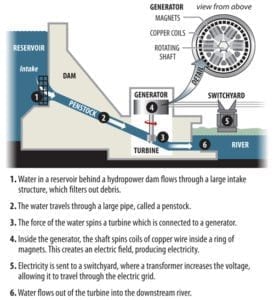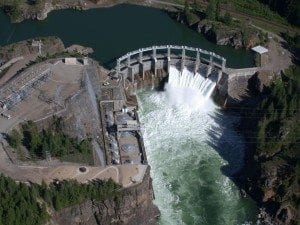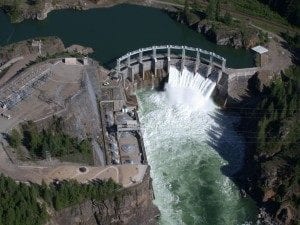CONVENTIONAL HYDROPOWER

Conventional hydropower projects make up the majority of the water power generated in the U.S. today and have been doing so reliably for decades.

Some conventional hydropower projects use a dam to collect and release water

in controlled circumstances. Dams are often built on rivers where there is a drop in elevation creating what is known as “head” — the height difference between the water contained in the reservoir behind the dam and that of the water released below the dam, use the gravity of the flowing water to produce clean renewable power. A higher head means that water will flow with more force through a turbine to generate more power.
Water stored behind a dam enters the turbine through a pipe called a penstock. Water flows from the penstock to turn the blades of a turbine, which spins a shaft connected to the generator that generates electricity. Water then flows out of the turbine and back into the river beyond.
There are approximately 80,000 dams in the U.S., but only three percent of them currently generate electricity. Learn more about adding power to our existing dams.


